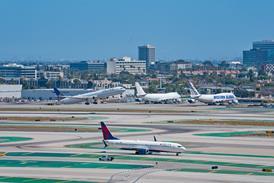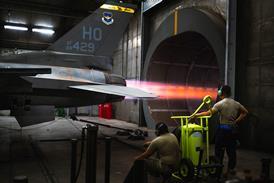David Learmount/LONDON
Reduced vertical separation minima (RVSM) was introduced between 29,000 and 41,000ft (8,800-12,500m) on 19 April in UK airspace. The move has come well before continental Europe, which will introduce capacity-enhancing RVSM on 24 January next year.
The UK is acting ahead of mainland Europe as the UK's new en route air traffic control (ATC) centre at Swanwick will become operational at the same time and introducing two new systems simultaneously was deemed unwise, says National Air Traffic Services' (NATS) manager en route airspace Ben Benoist.
Aircraft vertical separation in the RVSM altitude band has been reduced from 2,000ft to 1,000ft, adding six flight levels. After a two- to three-month familiarisation period, during which sector flows will be carefully monitored, air traffic delays should be reduced, says NATS. RVSM has been in operation over Ireland and the North Atlantic in the 29,000-31,000ft band since 1997 and it will be extended up to 41,000ft in the oceanic area also on 24 January.
Flight levels from 29,000ft upwards are now organised (as they always have been in controlled airspace below that level) according to the semi-circular system, whereby airliners tracking easterly fly at the odd-number thousands of feet and westerly at the even levels.
Approved aircraft - those equipped to RVSM standards and crewed by familiarised pilots - are expected to file flight plans for their best level using the full RVSM availability. The estimated 10% not yet equipped will continue to fly at non-RVSM levels. Controllers receive automatic warning of non-approved aircraft, says NATS.
Transitional airspace to the UK east and south, in which traffic will have to change between RVSM and non-RVSM airspace, will have target sector flows imposed by NATS to ensure that the ATC burden is not too high.
Source: Flight International























